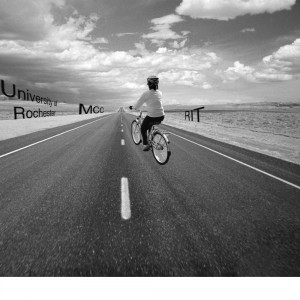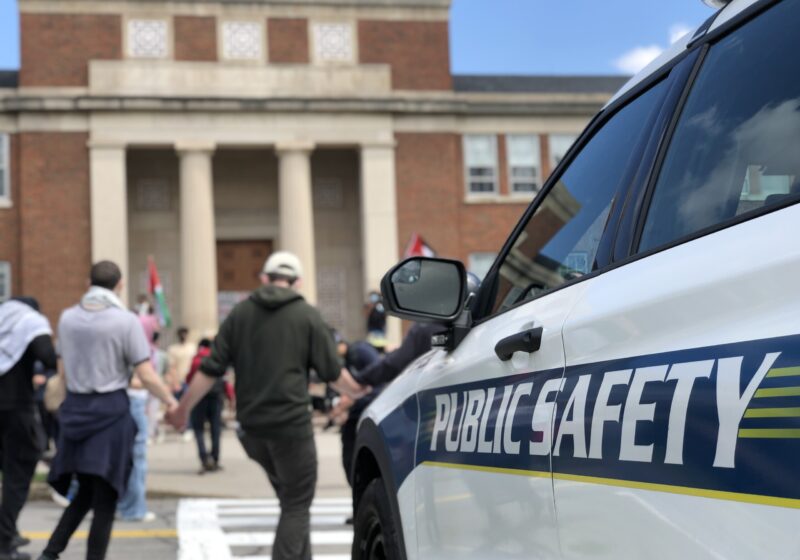
Julia Sklar, Presentation Editor
At a time when some see the city of Rochester as declining following the bankruptcy filing of city mainstay Kodak, Jon Schull, Rochester Institute of Technology faculty member and co-founder of the Rochester Cycling Alliance, sees the city’s salvation in something slightly unusual — cycling.
His most recent “crusade” focuses on a project that was recently in the media spotlight following New York state Governor Andrew Cuomo’s announcement of support for a $1 million construction project to improve Interstate 390.
UR President Joel Seligman has also pledged his support for this project, which he says could spur job creation and facilitate access to UR, the region’s largest employer.
But Schull says that for a fraction of the money, the three largest schools in the region — UR, RIT and Monroe Community College — could be linked in a “Rochester Multiversity,” not through concrete and highways but through bike paths.
His reasons are numerous — in addition to paltry costs in comparison to the proposed highway construction plan, the path system would provide transportation alternatives, mitigate parking problems, decrease dependence on foreign oil, help forestall climate change and address what he calls the “bright flight” of young people from the community.
“With the current design, it’s all about autos when at very little marginal cost, you could also provide an active transportation network,” he said.
And this dream is not just in Schull’s head.
The New York State Department of Transportation (DOT) accepted written comments from the public through Tuesday, Jan. 31, following a public meeting on Tuesday, Jan. 17.
DOT engineer Howard Ressel said on Monday that “quite a few comments” had been received supporting multi-use trails, but that the comments varied greatly depending on people’s interests — some people want access on the west side of the city, for example, while others want access from UR.
Ressel said that DOT plans to analyze all the comments and “address them the best way we can.”
“My goal is to respond individually to the comments,” he said.
Ressel could not give an exact idea about the likelihood of the bike path idea coming to fruition, but said that the DOT will finalize recommendations and send them to the highway administration for a determination on the environmental impact of the project. After these initial findings, which he estimated would conclude in April or May, Ressel said design approval would commence.
Schull has proposed two modifications, both of which stem from his primary thesis that “the biggest immediate benefit would be connecting the colleges.” From MCC to UR and from RIT and UR it is about 2.5 miles and from MCC to RIT it is about 3 miles, he says — all “reasonable biking distances.”
The first modification is linking MCC to Brighton and UR by turning the hiking trail which runs from MCC to the Erie Canal into a multi-use hiking and biking trail going west to Clinton and east to the East Henrietta Road bridge. The trail would need to include ramps from the canalway to bike lanes to allow riders to cross and go north to the city or west along the canalway to UR and western suburbs.
The second is linking UR to RIT, which Schull says could be done by improving the Lehigh Valley North Trail, which connects the Erie Canalway at UR to the Brighton-Henrietta Townline Road. Schull says this trail has some rough spots and is poorly marked, but could easily be fixed to create a “car-free, multi-use trail that connects RIT to UR and MCC.”
Associate Vice President of University Facilities and Services Richard Pifer said that “there is a strong and growing interest in cycling” on campus and in the region.
“The three academic institutions are almost connected now and I have no doubt that over time those connections will be completed and improved,” he said. “How and when the final pieces of the trail will be funded is impossible to predict.”
Buletti is a member of the class of 2013.


